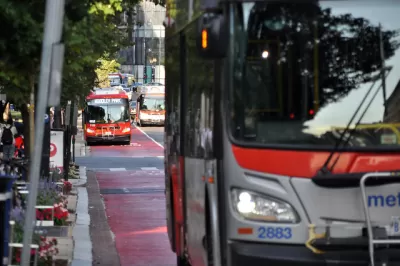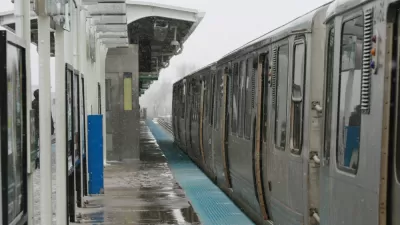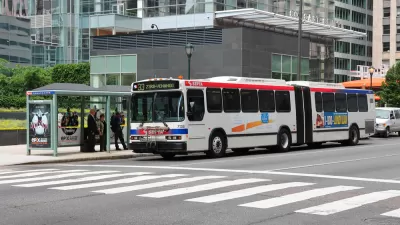The Transit Equity Dashboard reveals a more marked improvement in transit access in the District of Columbia than in other metro areas.

In a piece for Greater Greater Washington, Wyatt Gordon highlights the Washington Metropolitan Area Transit Authority (WMATA)’s successes in expanding services to more parts of the District of Columbia as its ridership steadily grows after pandemic-era drops.
“Some of the most significant boosts in transit access have happened in corners of the region that have needed it the most for decades, including Northern Virginia, Montgomery County, and Southeast DC. TransitCenter’s newly updated Transit Equity Dashboard makes it easy to explore the data behind the region’s ridership recovery, whether you are a policymaking professional, enthused advocate, or a data dilettante,” Gordon adds.
The dashboard can help agencies understand transportation needs in the region and how well existing transit is serving riders in various demographic groups. Hayley Richardson, communications director at TransitCenter, said “DC’s growth in access to opportunity via transit surpasses all other cities we looked at. Ridership on WMATA is bounding back faster than at other agencies which is a testament to the fact that when you put out good service, riders will come.” The results also signal the success of a shift to more frequent all-day service that moves away from focusing on 9-to-5 schedules.
However, “Besides a few pockets, nowhere in the region is public transportation truly competitive with cars. Even in much of the District itself, it takes residents three to five times longer to get their groceries via transit than it would take them by car.”
FULL STORY: Mapping transit equity as the region’s ridership rebounds

Maui's Vacation Rental Debate Turns Ugly
Verbal attacks, misinformation campaigns and fistfights plague a high-stakes debate to convert thousands of vacation rentals into long-term housing.

Planetizen Federal Action Tracker
A weekly monitor of how Trump’s orders and actions are impacting planners and planning in America.

In Urban Planning, AI Prompting Could be the New Design Thinking
Creativity has long been key to great urban design. What if we see AI as our new creative partner?

Cal Fire Chatbot Fails to Answer Basic Questions
An AI chatbot designed to provide information about wildfires can’t answer questions about evacuation orders, among other problems.

What Happens if Trump Kills Section 8?
The Trump admin aims to slash federal rental aid by nearly half and shift distribution to states. Experts warn this could spike homelessness and destabilize communities nationwide.

Sean Duffy Targets Rainbow Crosswalks in Road Safety Efforts
Despite evidence that colorful crosswalks actually improve intersection safety — and the lack of almost any crosswalks at all on the nation’s most dangerous arterial roads — U.S. Transportation Secretary Duffy is calling on states to remove them.
Urban Design for Planners 1: Software Tools
This six-course series explores essential urban design concepts using open source software and equips planners with the tools they need to participate fully in the urban design process.
Planning for Universal Design
Learn the tools for implementing Universal Design in planning regulations.
Appalachian Highlands Housing Partners
Gallatin County Department of Planning & Community Development
Heyer Gruel & Associates PA
Mpact (founded as Rail~Volution)
City of Camden Redevelopment Agency
City of Astoria
City of Portland
City of Laramie





























